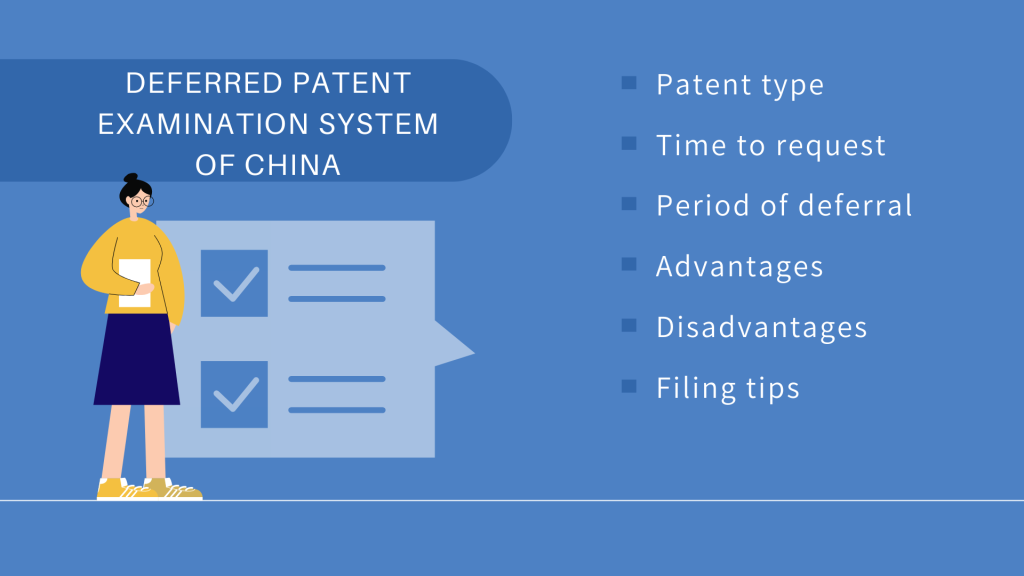What is the Deferred Examination System of Patents in China?

Applicants often use different strategies to speed up or slow down the examination prosecution of patents in China. For example, if the invention is of immediate commercial value and is likely to result in a strong patent, it would be desirable to initiate an examination request at an early stage. However, if the commercial value of the invention is as yet uncertain, expense will be saved or postponed by leaving the application dormant as long as possible. In our previous article, we have introduced several ways to accelerate the prosecution procedure. Here, we will share with you the deferred examination system of China.
In China, an applicant may request the China National Intellectual Property Administration (CNIPA) to defer examination of invention and design applications by one, two or three years.
Legal Basis
Section 8.3 of Chapter 7 of Part V of the Guidelines for Patent Examination provides that:
“The applicant of a Chinese invention or design patent application can request for deferred examination. A deferred examination request for an invention patent application should be submitted together with the request for substantive examination, but it shall take effect from the effective date of the substantive examination request; a deferred examination request for a design patent application should be made at the filing of the patent application. The period of deferral may be 1, 2 or 3 years from the effective date of the deferred examination request. After the period of deferral expires, the application will be examined in order. However, where necessary, CNIPA may start initiate the examination procedure at its own discretion and notify the applicant that the applicant’s request for the deferral in the examination period expires.”
When can applicants apply for deferred examination?
Invention patents
For invention patents, the request for deferred examination shall be made at the same time of filing the request for substantive examination.
Design patents
For design patents, the request for deferred examination shall be made t at the same time of filing patent application for design.
How long will patents be defered to start examination?
The period of deferral for patent application for invention or design shall be 1, 2 or 3 years from the date when the request for deferred examination takes effect.
Please note that after making a request for deferred examination, the applicant cannot change the period of deferral or revoke the request for deferred examination.
What are pros and cons of deferred examination?
the pros of deferred examination
The deferred examination system gives an applicant more time to confirm value of the application and to determine protection scope of the application. Thus, the applicant can obtain more time for competition and win greater initiative in the market.
the cons of deferred examination
The most obvious disadvantage of deferred examination is that it shortens the patent protection term. Because patent protection term will be calculated from the filing date, the longer it takes during the examination procedure, the shorter the protection term.
Tips on filing strategy
To make good use of the deferred examination system in China, we have some filing suggestions for applicants, i.e. the combination of deferred examination and divisional application. This filing strategy will leave you more time and space to plan your patent protection scope.
For example, you may file an invention application CN 1 and request for a 3-year deferred examination, and then you may file divisional applications CN 2, CN 3 or CN 4, CN 5 as long as the parent patent is pending. The protection scope of the parent application is uncertain since it is not yet allowed, while you may also “design” as many as divisional applications based on the products of your competitors. It would be a big threat for them.
This filing strategy is somehow similar to the working mechanism of the U.S. continuation patent system. We will talk more about it in another article relating to the divisional patent system of China.

